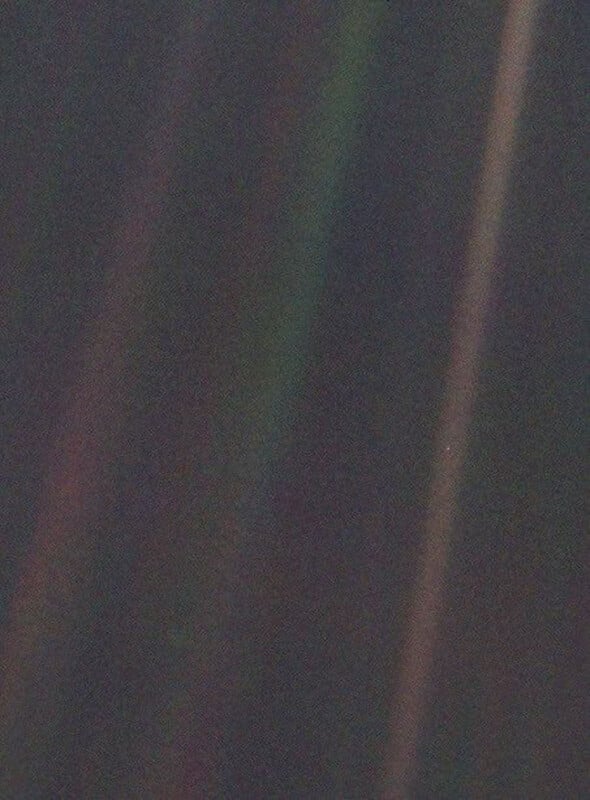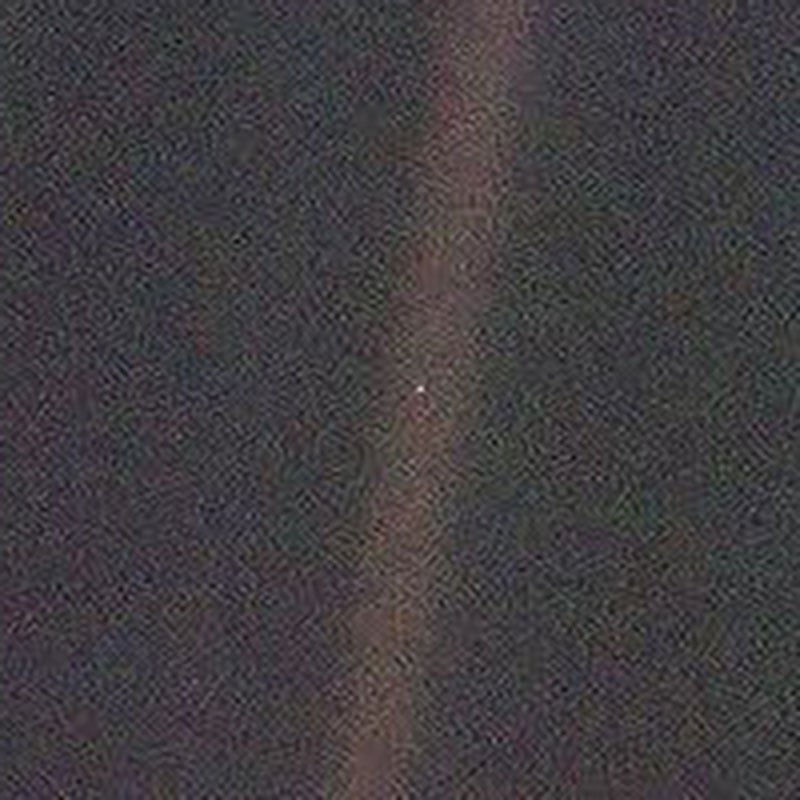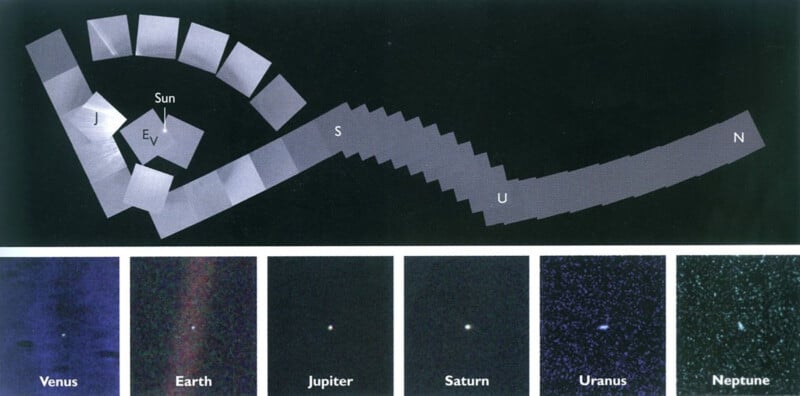
Thirty-five years ago, NASA’s Voyager 1 spacecraft captured the iconic image known as “Pale Blue Dot” on Valentine’s Day, a photograph that continues to captivate audiences today.
“Pale Blue Dot” is one of the most celebrated images of our planet, taken from an astonishing distance of six billion kilometers (or 3.7 billion miles). It holds the record as the furthest photo ever taken of Earth.
Captured on February 14, 1990, this remarkable image was facilitated by the late astronomer Carl Sagan’s encouragement. NASA’s engineers directed one of Voyager 1’s cameras back towards the Earth, nearly 13 years after its departure, to snap a last glimpse of our planet as a tiny bluish-white speck against the vastness of the universe.


This powerful image holds a unique significance for countless viewers and inspired Sagan’s 1994 book, also titled Pale Blue Dot, where he weaves together philosophy and science to explore humanity’s role in the cosmos. The photograph’s portrayal of Earth as a minuscule dot evokes deep emotions, underscoring its status as one of the most profound images in history.
Over the years, NASA has revisited this landmark photograph, enhancing its resolution with advanced digital processing techniques. The latest version, shown at the beginning of this article, was released in 2020 to mark the 30-year milestone of this remarkable image. The original photograph, however, was only 453 pixels wide and 614 pixels tall, taken using one of Voyager’s two onboard vidicon cameras, which were early models of television cameras.
The two cameras included a wide-angle lens designed for capturing planets as Voyager flew by, as well as a camera with a longer focal length for more detailed shots.
It’s noteworthy to mention that NASA’s Voyager 1 is still operational, journeying through deep space. Launched on September 5, 1977, it travels at speeds exceeding 38,000 miles per hour and is now approximately 15.5 billion miles from Earth, with that distance increasing every moment. In August 2012, Voyager 1 surpassed all previous records as the most distant human-made object.
While the Voyager mission remains active and the imaging systems could technically be reactivated, the team has prioritized other scientific objectives. Both Voyager 1 and 2 continue to gather and transmit scientific data back to Earth, although some instruments are being gradually disabled. NASA estimates that operational contact with Voyager 1 may cease in 2036, nearly six decades after its launch.
The last set of images taken by Voyager 1 was a collective “Solar System Family Portrait” in 1990, comprising 60 photos of various planets within our solar system.

Similar to “Pale Blue Dot,” this image series also marks its 35th anniversary today. Although the 60 images were not captured simultaneously, they were published on February 14, 1990, representing the first and only instance where a spacecraft attempted to photograph the entirety of our solar system. This collection includes “Pale Blue Dot,” along with depictions of Venus, Jupiter, Saturn, Uranus, and Neptune.

Unfortunately, Mars was obscured by sunlight, Mercury was too close to the Sun, and Pluto was not visible due to its diminutive size and lack of brightness for Voyager 1’s cameras to detect it.
Dr. Thomas H. Zurbuchen, Associate Administrator of NASA’s Science Mission Directorate, encapsulated the significance of this family portrait in 2018, stating, “It symbolizes what NASA exploration is truly about: experiencing our world from a different and broader perspective.”
To truly appreciate the legacy of “Pale Blue Dot,” we can reflect on this famous quote from Carl Sagan’s book of the same name:
Look again at that dot. That’s here. That’s home. That’s us. On it everyone you love, everyone you know, everyone you ever heard of, every human being who ever was, lived out their lives. The aggregate of our joy and suffering, thousands of confident religions, ideologies, and economic doctrines, every hunter and forager, every hero and coward, every creator and destroyer of civilization, every king and peasant, every young couple in love, every mother and father, hopeful child, inventor and explorer, every teacher of morals, every corrupt politician, every ‘superstar,’ every ‘supreme leader,’ every saint and sinner in the history of our species lived there — on a mote of dust suspended in a sunbeam.
Image credits: NASA/JPL-Caltech









